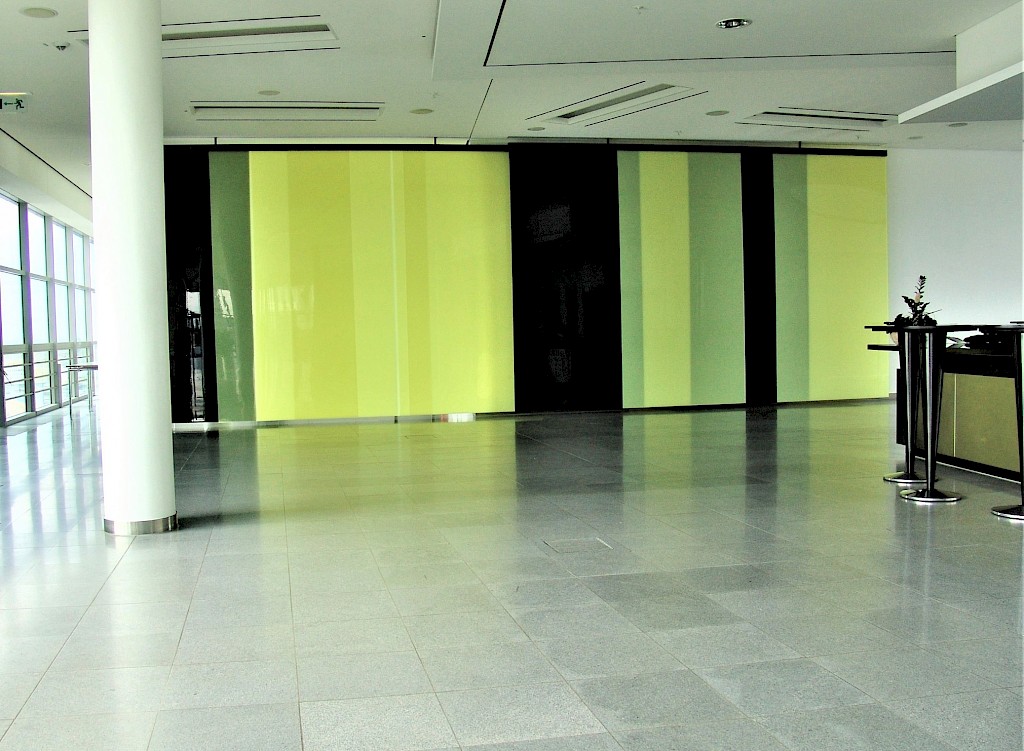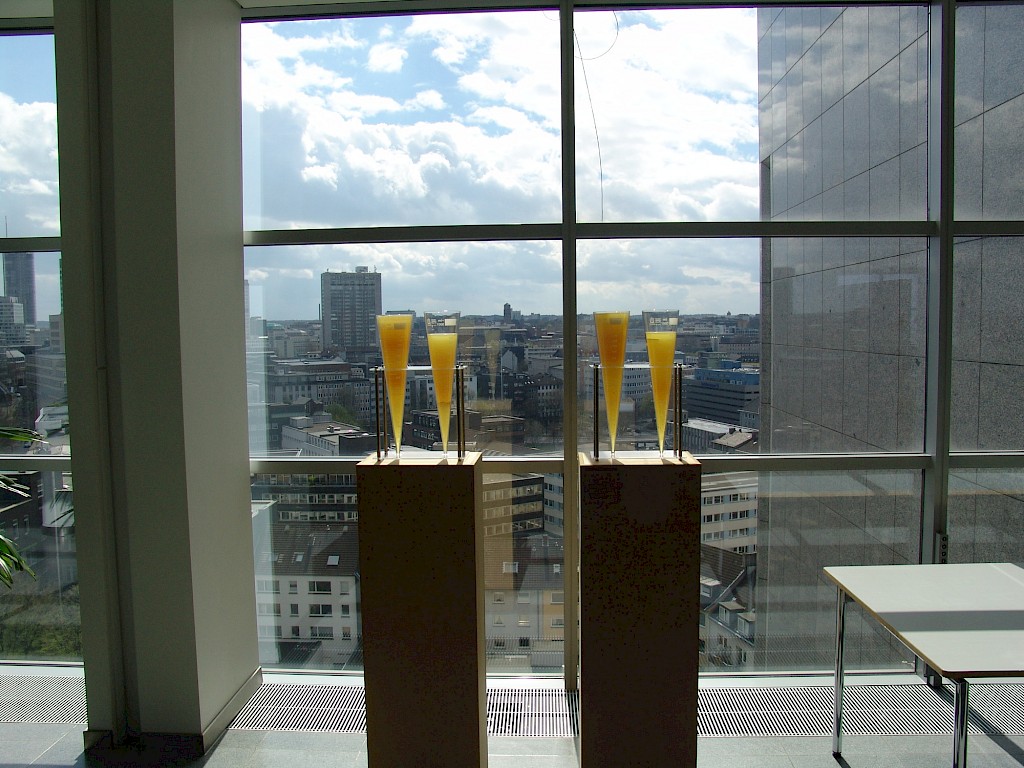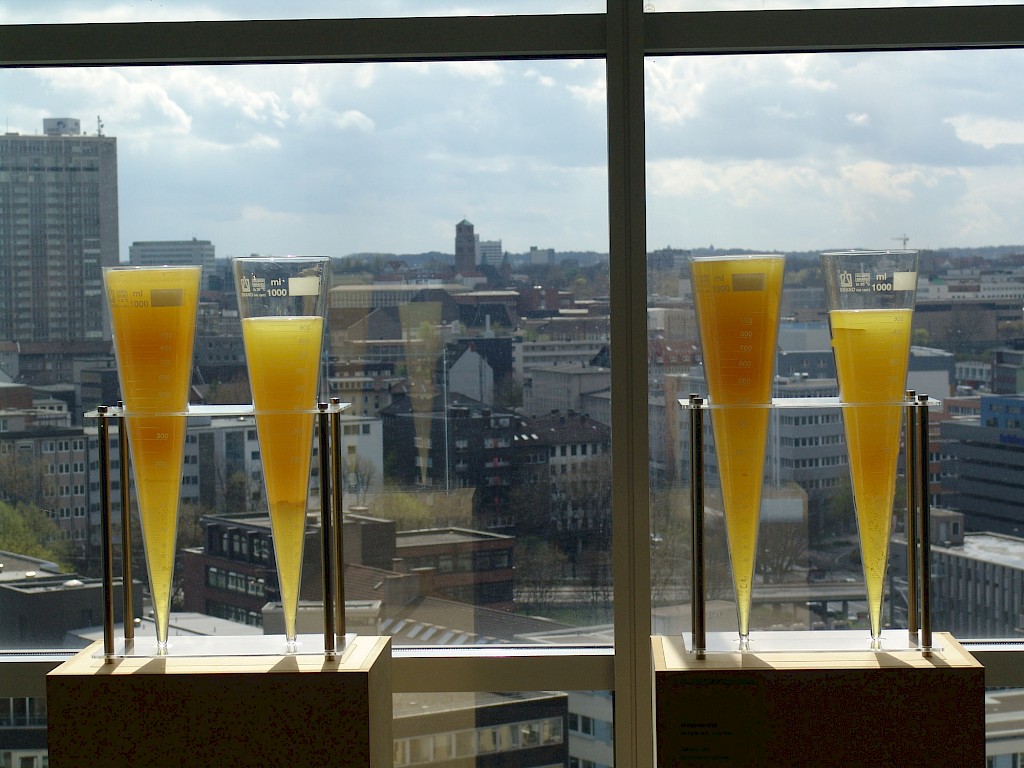Constant Moving
Constant Moving
2002
Installation Sparkasse Essen, III. Hagen, 9. OG
Dr. Maria Müller (MM) in conversation with Werner Haypeter (WH)
MM: Compared to previous environments that you realised in public buildings, the installation at the Sparkasse at Essen drastically reshapes the structure of the ambient space. How did the idea for this widening of your work come about?
WH: When I familiarised myself with the situation at the building site of Sparkasse Essen’s headquarters, the plans for the design of the building, including the ninth floor, were there, but the structural work had not yet begun. That gave me the opportunity to consult with the architects and the owners to have the alterations that my environment piece needed incorporated in situ. Both in the plans and on site, the function intended for the rooms was easily discernible. That supplied the point of departure for my considerations. In the overall architecture of the ninth floor, the blind partitions acquire particular significance. But what interested me more than anything was a movable door intended for dividing the space if called for at events or to conceal something, catering services and so on.
This situation in which function would become tangible, would not let me go. Now there are yellow and black widths of PVC hanging there, held in place by a special clamp construction at a considerable distance in front of a wall so that the wall itself is not the support for the images. That’s very important to me – the outcome at that time, during that phase of work, was a swing door, of the kind found in many industrial plants.
MM: A swing door that opens up the space by dint of its physicality and its colour.
WH: Because of the unusual width of the PVC foils, their overlapping and their corresponding chromatic arrangement, the would-be swing door becomes a mutating space of visual experience. Additional electrically powered sliding black and yellow PVC elements make it possible to alter the spatial conditions. Radio-controlled, the sheets can be moved until a picture space is created, up to ten meters wide.
MM: In various works of the past years, - I’m thinking of the installation at the Staatsgalerie Moderner Kunst in Munich in 1995, or a PVC wall piece of 1990 at the Folkwang Museum at Essen, the elements looked as if they could be moved in principle. Now in this work, movement has become a factual option with the aid of coded remote control.
WH: That’s right, the idea had preoccupied me since Munich, but the piece only developed and took on form here in this building. The variable picture now takes the place of the wall originally intended – it makes the wall redundant, because the intended function of separating and screening off is now taken on by the picture. The picture constantly alters its own situation in the space; it is the picture that determines the colour and light conditions, separating and uniting to an equal extent.
MM: The work has become part of the architecture and yet it is perceived simultaneously as an autonomous work of art. Originally your idea was to position further elements on the ninth floor – why did you change your mind?
WH: Together with the architect and the owners, I was able to alter the whole environment in terms of its material qualities, form and colour, so what more did I need to do to put my idea and my aim of breaking down the boundary between the second and the third dimension into practice?
Further publications
Mario-Andreas von Lüttichau in: »Sammlung Sparkasse Essen«, Ed. Sparkasse Essen 2003






